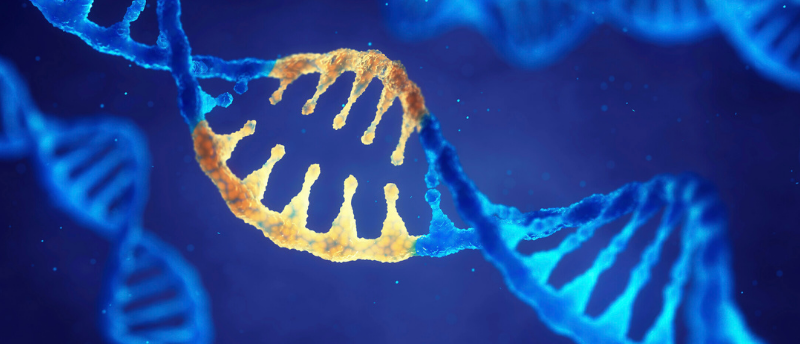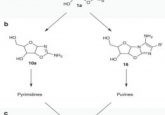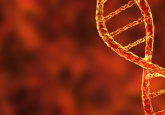Using CRISPR for therapeutic drug discovery

Elmar Nurmemmedov, Principal Investigator and Director of Drug Discovery at Saint John’s Cancer Institute (CA, USA), explains how CRISPR is used in drug discovery and how artificial intelligence can play a role in this field.
 Nurmemmedov’s research is focused on structural biology and drug discovery in the field of ‘challenging’ drug targets, particularly transcription factors. During his training at Children’s Hospital Boston, Harvard Medical School (MA, USA), he led the drug discovery project at Broad Institute (MA, USA) for sickle cell anemia. His training in molecular biophysics and molecular pharmacology contributed significantly to identification of early-stage drug candidates. Altogether, Nurmemmedov aims to continue his scientific career with molecular pharmacology and drug discovery applied especially in the field of glioblastoma.
Nurmemmedov’s research is focused on structural biology and drug discovery in the field of ‘challenging’ drug targets, particularly transcription factors. During his training at Children’s Hospital Boston, Harvard Medical School (MA, USA), he led the drug discovery project at Broad Institute (MA, USA) for sickle cell anemia. His training in molecular biophysics and molecular pharmacology contributed significantly to identification of early-stage drug candidates. Altogether, Nurmemmedov aims to continue his scientific career with molecular pharmacology and drug discovery applied especially in the field of glioblastoma.
How have you used CRISPR as a tool for drug discovery in your research?
CRISPR has three components to it for drug discovery. First of all, it’s for discovery of targets and validating the target sites. The second thing it can be used for is the discovery of the ligands, the therapeutics and the molecules. And thirdly, CRISPR can be used for interrogating disease mechanisms of action.
In my lab, we have particularly focused on the therapeutic discovery, the ligand discovery. Essentially, we are in the business of discovering new experimental therapeutics and testing them in a disease model. CRISPR is a very handy tool for injecting small guide RNAs that can switch certain target genes on and off, and this means we are able to switch on or off the presumed targets of our therapeutics, so we can gauge the effect of the therapeutics on those cells.
What specific CRISPR tools are you using to inject those guide RNAs and switch off those different genes?
Experimentally, it comes down to transfection. Basically, you are using Lipofectamine and detergents to push the small molecule RNA guides into the cell. This is an established technique but there are innovations around increasing the efficiency of those transfections. I think the real challenge is after the CRISPR experiment is conducted, and that is the bioinformatics. In this context, bioinformatics refers to the computational tools that will interrogate and calculate the counts of the guides from those selected cells.
The tools have to serve the hypothesis – are you looking for the guides that are being enriched? Are you looking for the guides that are being depleted during that selection process? Those questions are important and the types of bioinformatics tools are important as well. Sometimes they have to be tailored after the questions are asked. We have bioinformatics people in our team and we do these kind of analyses on a common basis. Sometimes we have to use non-conventional or more creative packages like CRISPResso, for example, and we use these to map the identified guides with certain CRISPRs onto the surface of the target protein to really understand what parts of the protein will be therapeutically important, will sensitize or desensitize a certain target protein and mimic to the action of small molecule therapeutics.
How can CRISPR provide the amino acids and a resolution to guide drug discovery towards a challenging drug target?
That’s a new direction in the CRISPR field. I think we refer to this as scanning or the tiling CRISPR screen. Essentially, you design a CRISPR screen that contains guides targeting each particular amino acid of your protein of interest. Ideally you want to perturb every amino acid at a time to understand which positions of that particular protein will change the function or otherwise alter the function of that target protein. Once the tiling CRISPR library is generated, the cell that will carry the disease of interest can be chosen.
The cells are then transfected and the selective pressure is applied, which will deplete or enrich certain guide RNAs from that screen. Bioinformatic analysis will identify those guides. If the experiment is done properly under the right rigorous conditions, you can expect some amino acid resolution from that screen and it boils down to your bioinformatic tools as well. And this is where one of the tools like CRISPResso can be very useful, for mapping those individual amino acids on the surface of the protein of interest. This helps to really understand what areas are therapeutically important, and which areas can be targeted using small molecule therapeutics.
It’s an evolving field and I am sure there will be more innovations and the system will become more sensitive and provide greater resolution.
CRISPR is a key element of many lab scientists’ toolkits. In addition to its application in basic research, CRISPR is also being applied as a diagnostic and therapeutic tool, and is generating invaluable insights for drug discovery.
How can artificial intelligence contribute to CRISPR analysis and drug discovery and how can CRISPR analysis guide structural interrogation of important drug targets?
Science pools together research that is done by various parties, using other scientists’ research and data as a resource. And these projects are no different. To map on the surface of a structure, the structure has to be available. When it’s not available, you can’t do it. But nowadays, DeepMind AlphaFold is providing very good predictions of structures, even for challenging proteins whose structure was not available before.
CRISPR has a bigger outreach with these predicted structures by AlphaFold. So, amino acid resolution CRISPR screens can be conducted for challenging proteins. For example, you can have a predictive structure of a highly unstructured transcription factor and map results from the CRISPR screens on the surface of that protein. This provides a novel way of looking at challenging proteins that have never been therapeutically targeted.
Has CRISPR facilitated an understanding of different disease mechanisms and pathways in your work?
As previously mentioned, CRISPR has three major advantages: the target validation/discovery, the therapeutic discovery and the disease mechanism of action. For target discovery, hypothetically, CRISPR can be used to determine which genes are important in a disease by interrogating each gene at a time. The gene can then potentially be used as a therapeutic target.
For ligand discovery, there is already a therapeutic target, let’s say protein X. A CRISPR screen could be designed for that particular target and provide an amino acid perturbation mechanism to decipher the sensitive and therapeutically important sides of protein X. That could lead to discovery of therapeutic molecules.
Finally, for understanding the disease mechanism. A gene of interest could be switched on and off and the progression or disease state in the cell observed. Sometimes we will partially switch the gene off and see what happens to the disease state. This also provides a means to observe the transcriptomics and the RNA and protein states in the entire cell. This provides a rich data set that can be used to understand the disease mechanism.
Which disease areas do you think using CRISPR for drug discovery will have the biggest impact?
I think oncology is really benefiting from the CRISPR screen. CRISPR is really agnostic to disease states. Theoretically it can really be applied to any disease states where the genetic makeup is important, for example cancer, cardiovascular and diabetes. Those are the diseases that will benefit from CRISPR the most and currently 85%–90% of the CRISPR applications in literature are in the field of oncology, cancer, diabetes and inflammation. Hopefully once the genetic mechanisms of other diseases are better understood, they will also start benefitting from CRISPR applications.
The opinions expressed are those of the interviewee and do not necessarily reflect the views of BioTechniques or Future Science Group.






